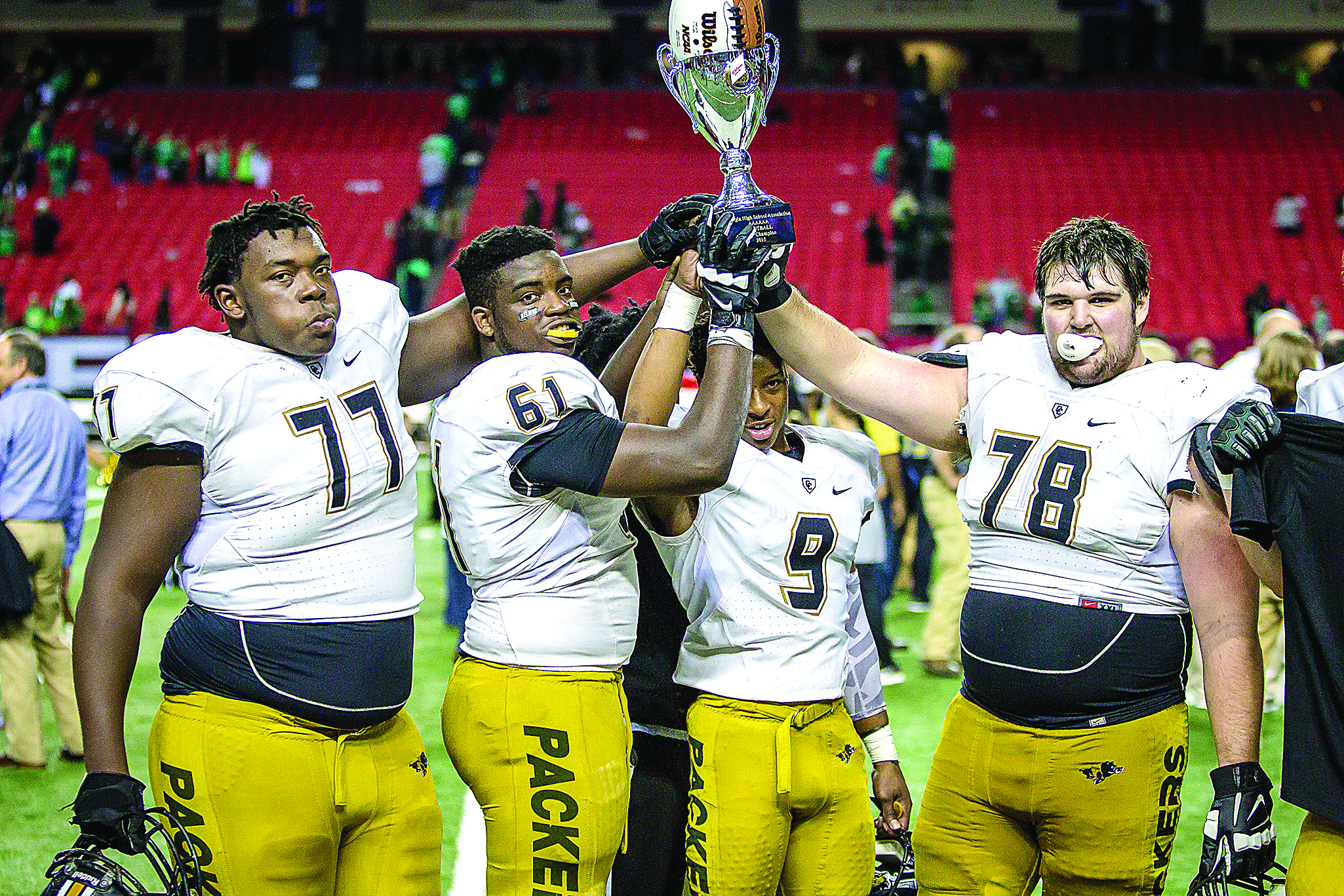EDDIE SEAGLE: As September comes
Published 8:00 am Wednesday, August 31, 2022

- Eddie Seagle is a Sustainability Verifier, Golf Environment Organization (Scotland), Agronomist and Horticulturalist, CSI: Seagle (Consulting Services International) LLC, Professor Emeritus and Honorary Alumnus (Abraham Baldwin Agricultural College), Distinguished Professor for Teaching and Learning (University System of Georgia) and Short Term Missionary (Heritage Church, Moultrie). Direct inquiries to csi_seagle@yahoo.com.
“By all these lovely tokens, September days are here. With summer’s best of weather and autumn’s best of cheer.” Helen Hunt Jackson. “September days have the warmth of summer in their briefer hours, but in their lengthening evenings a prophetic breath of autumn.” Rowland E. Robinson. “The leaves fall, the wind blows, and the farm country slowly changes from the summer cottons into its winter wools.” Henry Beston. “I love September, especially when we’re in it.” Willie Stargell. “September is dressing herself in showy dahlias and splendid marigolds and starry zinnias.” Olive Wendell Holmes. “September has come, it is hers whose vitality leaps in the autumn, whose nature prefers trees without leaves and a fire in the fireplace.” Louis MacNeice.
Farewell to August as September is upon us and we can’t wait to see what it has in store for us. Transitioning into fall time offers opportunities to work with your plants, change the landscape, and prepare the site for the new planting of herbaceous and woody plant materials. As September comes, your landscape focus should include the following items as they relate to your individual needs.
Trending
Birds: Make the necessary preparations to help our feathered friends in the hunt for food this fall and winter season. Start by cleaning existing feeders and placing them in strategic locations for bird activity and window viewing which will provide much enjoyment from the comfort of your home. Replace bird food as necessary to insure an adequate supply for their survival. Also left undisturbed, the dry seed heads on many of your plants is another great way to supply fall and winter food for birds.
Houseplants: Plan to bring houseplants indoors (that summered outdoors) as the temps begin to cool down. After months of humidity and sufficient light outdoors, they must now adapt to the drier air and lower light levels inside the home. Proper acclimatization is critical in that the plants should be slowly transitioned from the outdoors to a one- to two-week holding area (carport or garage) before placement indoors. Before leaving their outdoor environment, check each plant for problems such as insect or disease activity, fertilizer deficiencies, and general plant health. The problem is easier addressed outdoors rather than indoors later. Also, clean exterior of each pot thoroughly along sides and bottom using garden hose and scrub brush. Use pruning shears to snip any root activity exiting the pot. If the plant is root- or pot-bound, then transplant to next larger pot size while outdoors.
Irrigation: Don’t forget the water! As the weather gets cooler, your landscape can still be exposed to long spans of dry, sunny weather. It’s particularly important that all newly planted perennials, groundcovers, trees and shrubs don’t dry out. The strategy is to water deeply (not a light surface application) to establish self-sufficient plants. Plants use less water during cooler weather.
Leaves: As fall color approaches, we will all enjoy the leaf color and arrangements designed by nature. However, as fall color plays its course, the leaves will eventually drop from the trees and accumulate all over the ground on the lawn and bed areas alike. We must take measures to clean up the leaf debri and properly dispose of our collection or recycle through composting. A small price to pay for the beauty and curb appeal of deciduous tree leaves in the fall season. Unless, of course, you have a totally natural area that is left undisturbed, then leave them alone.
Overseeding: Overseeding with cool season turgrasses is the practice to achieve winter color on your warm season lawn during host dormancy. While it is cosmetically beneficial, it also offers some competitiveness which may reduce the density of your host turfgrass come spring. Upon evaluation of turfgrass texture and density, bermudagrass is more overseeding-friendly than other lawn grasses. Centipedegrass, St. Augustinegrass, zoysia, and paspalums are not as overseeding-friendly. It is very important to understand the end result on your host turfgrass come spring and next season. Overseeding of bermudagrass can be effectively achieved using mixtures or blends of ryegrass and other cool season grasses between mid-October and late November. An alternate approach to overseeding for winter coloration of your lawn is the application of color pigments that match the natural color of your host turfgrass. These pigments will last throughout the season with one to two applications and are turfgrass- and environmentally-friendly.
Perennials: Fall is the best season to plant such perennials as iris, daylilies, and Shasta daisies. If established perennials have become overcrowded, dig and divide them. Complete planting and transplanting as early as possible to allow plants enough time to become established before cold weather arrives. First killing frost is usually about November 15, but varies each year (even into December or later).
Trending
Planting: Planted now, container grown and B&B (balled and burlapped) trees and shrubs will have plenty of time to become established before cold weather actually begins. Next spring, the plants will get off to a strong start, as the roots will be established and plant energy can be spent on leaf and flower production.
Root pruning: Young trees and shrubs to be moved this winter should be root pruned now. Insert a spade into the ground in a circular pattern around the plant (18- to 24-inches from the trunk pending size of transplant) with minimal disturbance to the rootstock soil. This severs the roots and encourages new feeder roots which minimizes suffering and stress during the transplanting process. Maintain optimal cultural practices, especially sufficient watering.
As fall landscaping approaches, think in terms of native and sustainable plants. Be on the lookout for children playing and bicyclists riding along the streets and roadways throughout our communities. Pay attention to school buses and respect their stop signs and other signals as they transport our children to and from school and home. Remember to safely share the road with motorcycles and bicycles. And as you receive blessings, always pay them forward and share with others. Happy Labor Day weekend! Have a blessed and safe September.
—
“He who did not spare His own Son, but gave Him up for us all — how will He not also, along with Him, give us all things?” Romans 8:32. “I love the Lord. He heard my voice; He heard my cry for mercy. Because He turned his ear to me, I will call on Him as long as I live.” Psalm 116:1-2. “Just as each of us has one body with many members, and these members do not all have the same function, so in Christ we who are many form one body, and each member belongs to all the others.” Romans 12:4-5. “You will keep in perfect peace Him whose mind is steadfast, because He trusts in you.” Isaiah 26:3. Jesus answered, “The work of God is this: To believe in the one he has sent.” John 6:29.
Eddie Seagle is a Sustainability Verifier, Golf Environment Organization (Scotland), Agronomist and Horticulturalist, CSI: Seagle (Consulting Services International) LLC, Professor Emeritus and Honorary Alumnus (Abraham Baldwin Agricultural College), Distinguished Professor for Teaching and Learning (University System of Georgia) and Short Term Missionary (Heritage Church, Moultrie). Direct inquiries to csi_seagle@yahoo.com.





